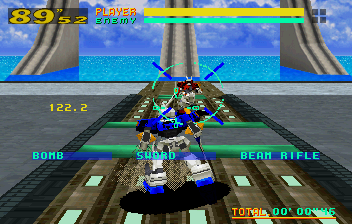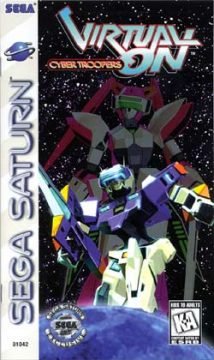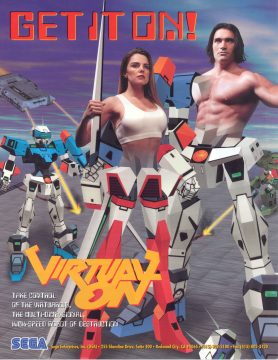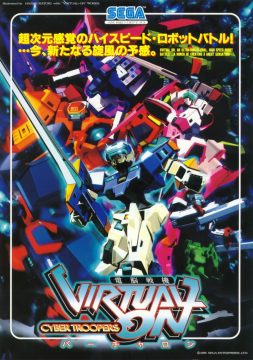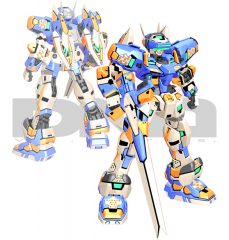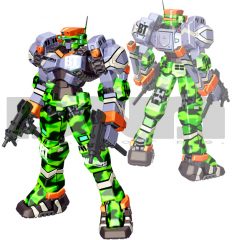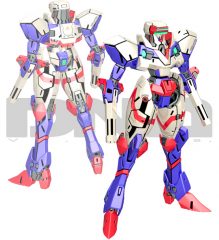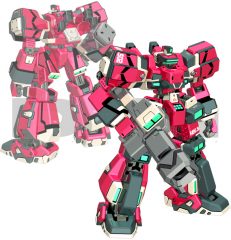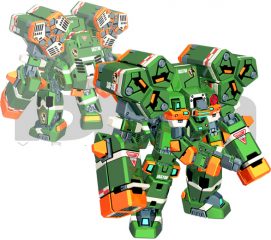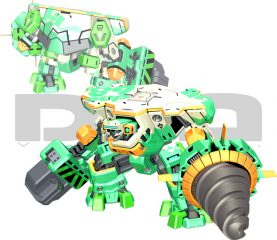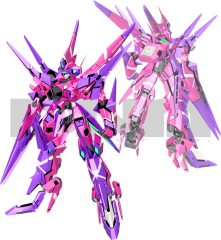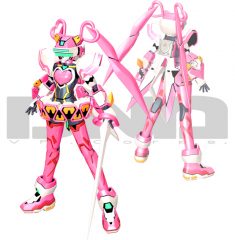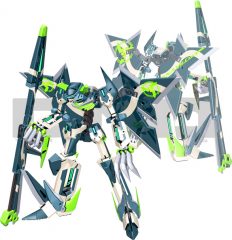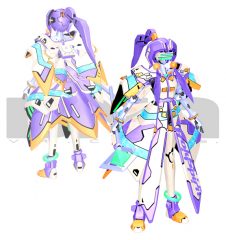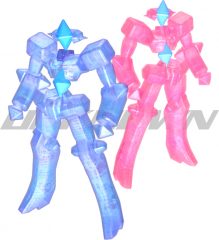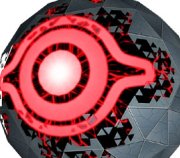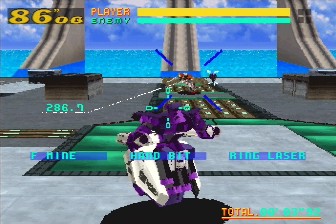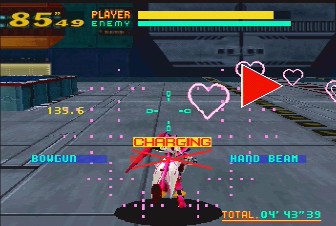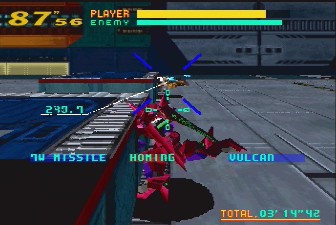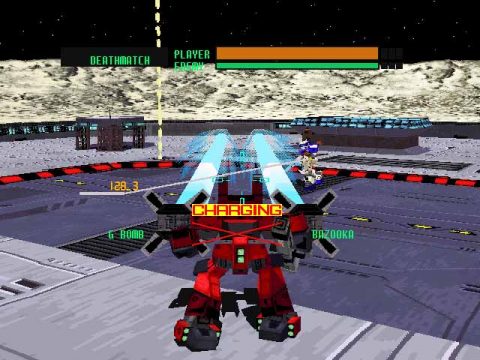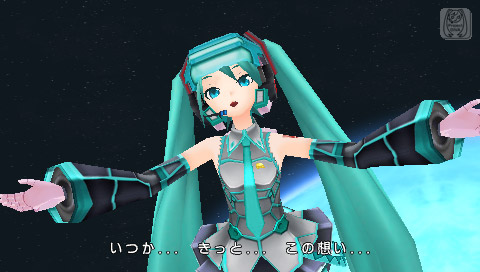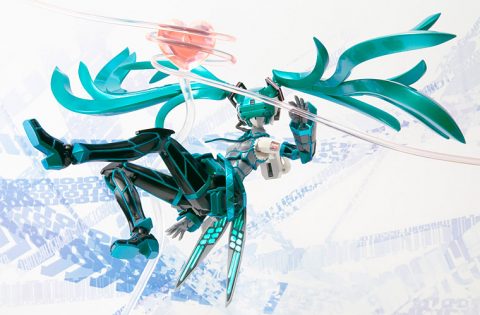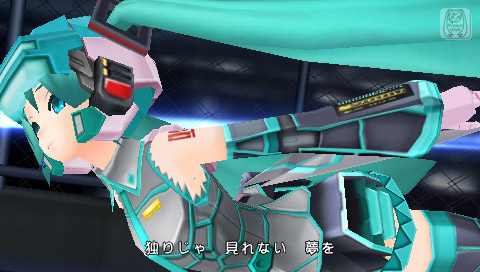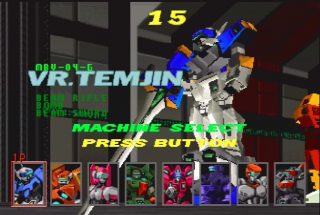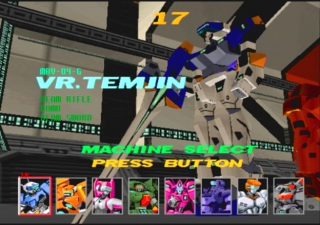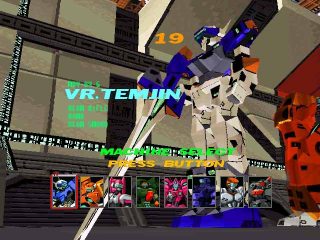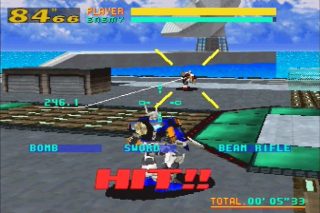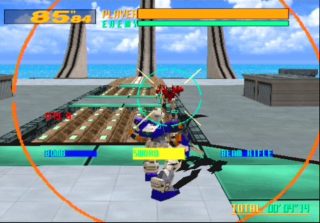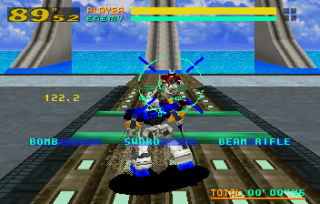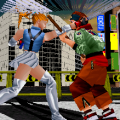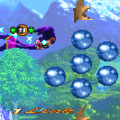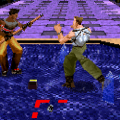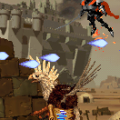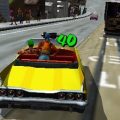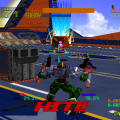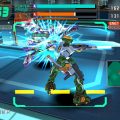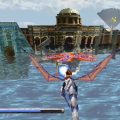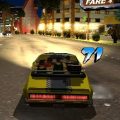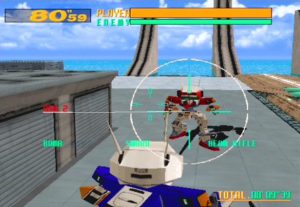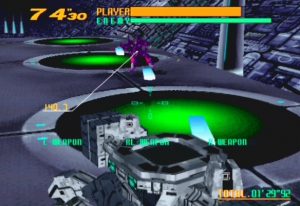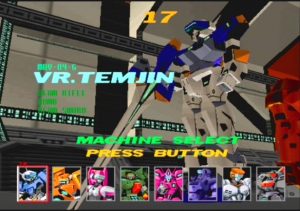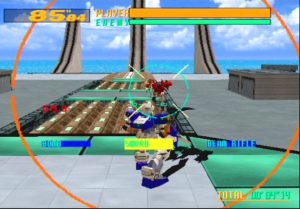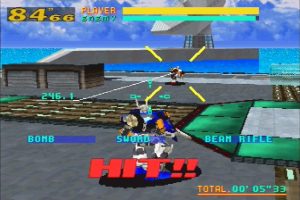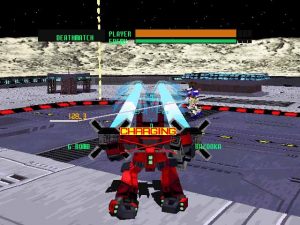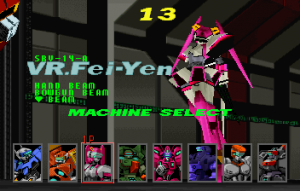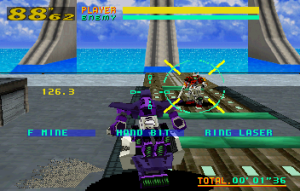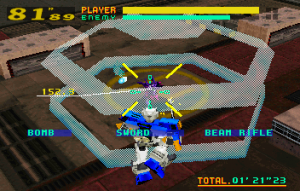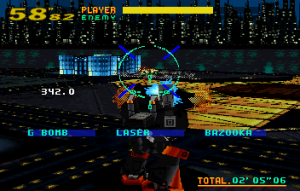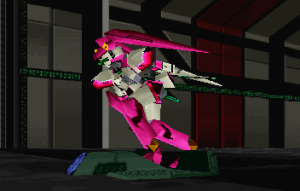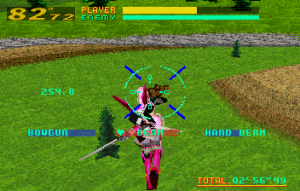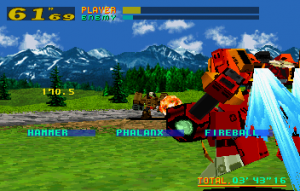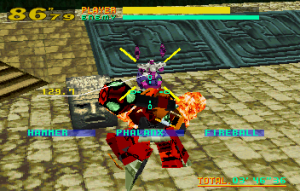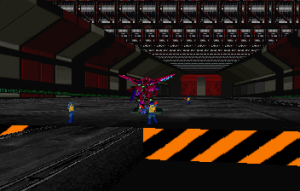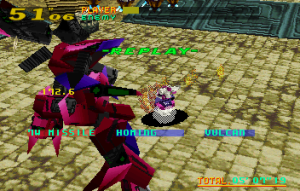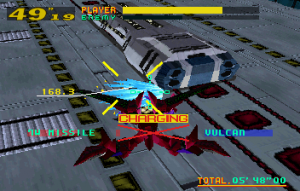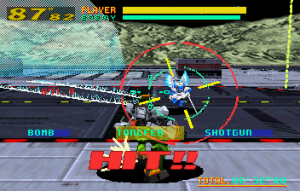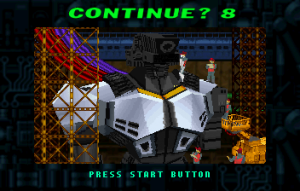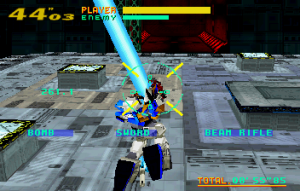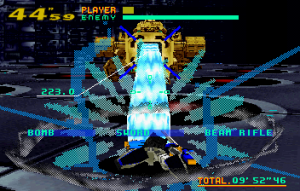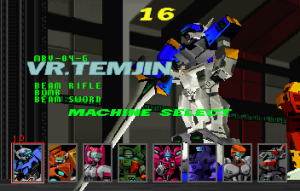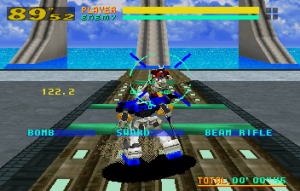Back in the mid-’90s and the days of arcade cabinets, Virtual On was one of Japan’s hottest games. Perhaps inspired by the fantasies woven by Yoshiyuki Tomino’s excellent storytelling anime Mobile Suit Gundam (the first series, not that Gundam Seed nonsense or what-have-you), Virtual On took players into an engaging control scheme and mind blazing experience as they battled it out in lighting-quick mech battles. It was a cult-classic too, and people willing to forgive its minor shortcomings had a blast, although not everyone got to experience it, as the arcade renditions were somewhat pricey and weren’t widely distributed in America. The whole series was created by Sega AM3, who were later renamed Hitmaker by the time they release the final game, Virtual On Marz.
It was a wonderful time for us gamers, especially those who lived and breathed the arcade scene. Of the most mind-blowing gems from Sega, we got Virtua Fighter, Virtua Cop, and of course, Virtual On. Virtual Fighter had the punches, the kicks, and the throws. Virtua Cop had the shooting. Virtual On had robots – awesome robots designed by veteran mecha designer Hajime Katoki (who worked on various Gundam outings) that blew each other up and delivered a whole lot of bang for your buck. And really, who could ask for more?
There are many unique mechs in Virtual On, although some of them are redesigned and change names throughout the series. The following pictures are primarily from Oratorio Tangram, the second installment:
Virtuaroids
Temjin
The most prominent VR in Virtual On. The Temjin is the Jack-of-All-Trades and uses a huge energy blade that fires beam projectiles at long range and turns into a lightsaber when used up close. The Temjin’s special attack involved jumping on its beam-sword/rifle and using it as a surfboard, colliding into the enemy.
Apharmd
A soldier-looking VR that bitchslaps the opponent with two laser contained tonfers. The Apharmd rocks at close range combat and mobility, but only has a weak shotgun in VO, and two weaker SMG’s in VOOT. His various models in MARZ gain more long-range capabilities, however.
Balbados / Bal
The original mech – the BAL-BAS-BOW – is a floaty-type VR said to be experimental in the game manual. It uses bombs and other type environmental attacks. It’s widely regarded as the worst mech in the game, except when the computer uses it. It was remodeled and renamed as the Bal-Bados in Oratorio Tangramand Bal-D-Meora in MARZ.
Raiden
The big, heavy VR. Raiden’s long range attacks and missiles are powerful, but he has little skill for hand-to-hand combat. Has the best armor and special attack in the game, though it’s laser attack can decimate most mechs in short order.
Belgdor / VOX
Raiden-looking Virtuaroids with better melee capabilities. They are called “VOX” in Virtual On Force and MARZ.
Dorkas / Dordray
Another box-looking VR, except with a crushing ball on its arm. Its special attack is to spin around its giant ball into the enemy. A newer version of the Dorkas appeared in Oratorio Tangram with a slightly less ridiculous name, and with a drill on its arm.
Viper II / Yzer / Myzr
A sleek looking VR with what looks like spines around its whole body. In MARZ and Force, it’s called a YZER. This mech could turn into a sweet-looking jet plane that you could ram into enemies. Incredibly sleek-looking. Cool name, too. Also known as the Cypher.
Fei Yen
A girlish VR with a maid’s uniform and a rapier. Also the fastest VR in the game (well in VO, anyway) and could go into something called hyper mode when reduced to half HP, making your attacks immensely powerful. In keeping with the “magical girl” themed appearance it can fire heart-shaped beams at your foes.
Specineff
What a badass. Mech with the style taken directly from the Grim Reaper, the Spencineff is a member of the YZER family and can use a devastating scythe and its razor-edged wings in battle. Introduced in Oratorio Tangram.
Angelan
A female mech resembling Belldandy from Oh! My Goddess. Can use incredibly damaging magic-like attacks involving water dragons and projectiles. Can also heal herself in battle. Also makes her first appearance in Oratorio Tangram.
Z-Gradt
Extremely massive robotic box-thing that fires bombs all about the arena and has a powerful attack called the “Sun Cannon” that can shave off half your lifebar.
A-Jim
Large red or blue colored mecha. Proceeds to beat the hell out your mech if you act like a sissy against the computer. Eventually can be unlocked and used to wreak havoc yourself.
The Virtual On series is one of the most engaging and deep mech fighters Sega or any company has ever released. It’s a challenge to master every nook and cranny of the series, and to this day, you’ll still see how innovative it is. Even its mech designs are at the top of the industry, with unique charm and personality that everyone can’t help but find interesting.
Many people dislike the combat of Virtual On and its distinct Japanese origins as being too inaccessible. Many of these critics may compare it to games like Steel Battalion and MechAssault. It’s true its intended for the devoted, but those who take the time to master its facets will discover a wonderful game with arcade action that simply can’t be beat.
Also called “Virtual On: Operation Moongate”, the beginning of the series brought the idea of mech battles to the player in a spectacular way. The story is, a large company by the name of DN discovers lost technology consisting of large, humanoid shaped robots. The company then develops them, naming them Virtuaroids (VR’s for short), but they became too difficult to control. So the company decides to cleverly make video games (hoo boy!) in an attempt to get unsuspecting consumers to control the mechs by direct transmissions, helping to stop a weapon now gone berserk still at the core of the ruins. The company called this plan “Operation Moongate”.
You control one of eight different VR’s with the twin joysticks in different motions to govern movement and it’s what garnered such devotion from the player. Moving one joystick made the mech move slowly. Moving both in tandem makes you run. Turning your mech is much like a tank, as you hold one stick up and the other down. Pulling the joysticks apart will command you your mech to jump into the air, and pulling them together will block. Combat is handled by the triggers (each VR has three weapons): You can fire the right weapon by pressing the right trigger, left weapon by pressing the left trigger, and the center weapon by pressing both triggers. Each weapon fires differently during standing, walking, dashing, jumping and crouching animations, and full understanding of your arsenal is the key to victory. Although ammo is technically unlimited, there are three status bars on the screen that show how long it will take to regenerate before you can fire a given weapon again. These basic controls are pretty daunting, but it only hints at the true depth of gameplay. There are also set ranges for weaponry, close range and short range, which use melee attacks and projectile weaponry, respectively. Knowing what to do, when to do it and how fast you did it made Virtual On stand out.
The frantic speed of Virtual On is part of the fun. Players can shoot, duck and slice their way to victory as mechs moved with the speed of a Concord. You need to dodge, attack, and strategize all while chaos is unfolding in every direction, which results in a rush of a battle unlike any other game – the game might look nice in still screenshots, but you need to see the game in motion to really get the feel of how fast everything moves. As one learns the controls and becomes more experienced, Virtual On becomes almost godlike in its fast-paced fun. There are unique special attacks for each VR, extra movements to discover for your avatar – for instance, the Raiden has excellent long-range weapons, but it doesn’t fare so hot with speed and close range fisticuffs.
One of the biggest obstacles in controlling your VR is keeping your enemy in your sights. Your targeting computer automatically locks onto your enemy, but the camera doesn’t follow them, so the enemy is constantly running from your line of sight. There’s only three options to make sure you have your eyes on your opponents: 1) Turn around your bot s-l-o-w-l-y as enemy’s picks away at your lifebar, 2) Jump up, which automatically regains lock-on with the enemy, and the most aggressive, 3) Use a dash attack. Sadly, making a 360 with your mech to regain sight of your foe is a long and arduous process and will only get you killed. You get used to constantly jumping just to recenter the camera, but it’s still a minor annoyance, and it permeates the series. But did this stop the fun? Absolutely not.
In the standard Arcade mode, you fight against CPU-controlled opponents and engage a mid-boss named Jaguarandi, who resembles a giant gorilla-like mech that lets loose volleys of missiles and has a devastating beam attack. Surviving this monstrosity eventually brings you to the Z-Gradt, a massive Robot resembling a spaceship with just as much firepower. And when fighting the Z-Gradt, the game implements a time limit as you fight to destroy the beast, before it smites you with its powerful beam cannon or other long-range devices.
The presentation of the entire game is fantastic. The mech selection screen takes place in a hangar, and when you make your selection, you’re treated to an awesome sequence of your chosen warrior revving their engines and launching from the carrier. All of the load screens are white static, and each mission is introduced by a creepy robot voice. Everything about this screams action. Even the Continue screen is cool, as it shows your technicians repairing your busted VR.
The music might not be to everyone’s taste. Composed by Kentaro Kobayashi, Virtual On‘s music is a mixture of upbeat, overly jaunty techno with an arcadey feel. Other tracks are much more slow-paced and melancholy, and don’t quite invoke a fighting-type atmosphere.
Following the success of Virtual On, home ports were inevitable. Two were released, one for the Sega Saturn – many people know it from the Saturn port – and another for MS Windows 9x on PC. Both are pretty faithful (extra content include a versus mode), although neither quite had the adrenaline rush that one experienced in the arcades. Perhaps it was because neither were powerful enough to replicate the smooth frame rate of the arcade game. Or perhaps it was because it lacked the sit-down cabinet and twin sticks, practically forcing players to adapt to completely different (and inferior) control methods.
Virtual On for PC recreates the graphics faithfully, although it appears a bit washed out (the Temjin’s color scheme appears less vibrant, for instance) without the support from the processing power of the Model 2 available in the arcades. The speed is also not as lighting quick and runs at a mere 30 FPS with horrendous slowdown, particularly during Z-Gradt’s stage and when the Raiden VR fires it special laser attack. The controls are also a mixed bag, with the options available to either use custom commands on the keyboard or use a joystick. The joystick customization is easily the more accessible of the two (with the keyboard, in my opinion being nearly unplayable). But by current standards, the gameplay is simply awful. The act of locking on in the PC port is the most egregious offender – not being able to jump and realign quickly will result in countless bouts of frustration. At worst, you’ll lose the match.
The Saturn version fares better – the controller is easier to get a feel for with the six button layout – one button for each of the three weapons, one to dash, one to jump and one to block. In an ideal world, the best scheme is the twin stick controller – it could be ordered from Sega at the hefty price of about $200. There was also later a Netlink version for Saturn released by Sega which allowed system link to VO players across the internet. However, the graphics take a hit in both resolution and framerate, so it’s neither as pretty nor as smooth as the arcade version.
The PlayStation 2 version – releasd in 2007 under the Sega Ages label – is a very faithful conversion of the arcade original, featuring far better character models, crisper graphics, better texturing on both the robots and the arenas, and a smoother frame rate. Although there aren’t any true dual stick controllers for the PS2, the Dual Shock sticks emulate it pretty well, at least better than any other console controllers in the past. There is a setting to use the Saturn PS2 pad, if you’re comfortable with it.
The extras are pretty nice too. In addition to the usual sound test and artwork gallery, you can turn on progressive scan and widescreen modes. If you have two PS2s and two TVs, you can use the system link to play against another player, in addition to the standard split screen mode. Also new is the Assault Mode (which removes most of your projectile weapons, forcing you to rely on jumping or melee attacks) and the Chibi Mode (which turns all of your virtuaroids into super deformed toys, basically giving you the equivalent of Virtual On Kids.) You can also enable dash cancelling (a feature that was introduced in the sequel, Oratorio Tangram, and wasn’t in the original version)By accessing a secret menu (go to the Options screen, highlight “Credits”, and hold right for a few seconds until a new menu appears), you can select the mid-boss Jaguarandi, in addition to enabling a few extra moves that were introduced in later games. There’s also the Z-Gradt mode, allowing you to play as the final boss, which is basically a huge walking cannon. It’s more for novelty than anything else, because the thing’s nearly impossible to control. If you manage to beat all of your opponents in Arcade mode in thirty seconds or less, you’ll also face a new secret boss – the original Fei Yan (the one you can play as in the game is apparently an inferior copy.)
Fei Yen costume for Hatsune Miku from Project Diva
Links:
Virtual On.net Massive parent site with a thriving community. Many thanks to them for information on ver.5.66 of Oratorio Tangram. (Archived in the Wayback)
Oratorio Tangram Official site. Mostly in Japanese. (Archived in the Wayback Machine)
Activition: VOOT English flash site for the Dreamcast game. (Archived in the Wayback Machine)
Insert Credit – Virtual Onslaught A short (but excellent) look at the series. (Archived in the Wayback Machine)
